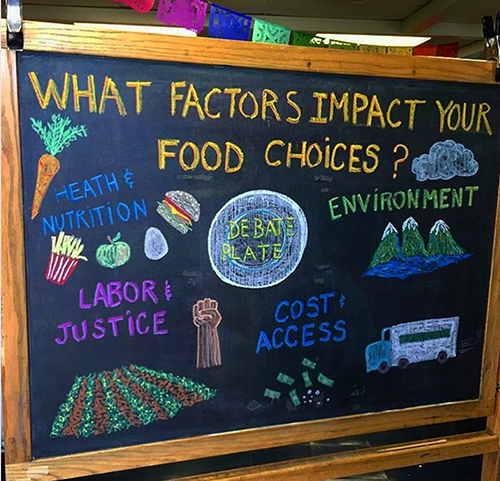MATERIALS
- “Debate Plate” visual aid
- Chili recipe
- Cornbread recipe
- Food choice consideration “lens” cards
- Small pieces of paper and pencils for exit ticket
CORNBREAD INGREDIENTS
- Flour
- Cornmeal
- Baking powder
- Baking soda
- Salt
- Eggs
- Butter
- Buttermilk
- Honey





